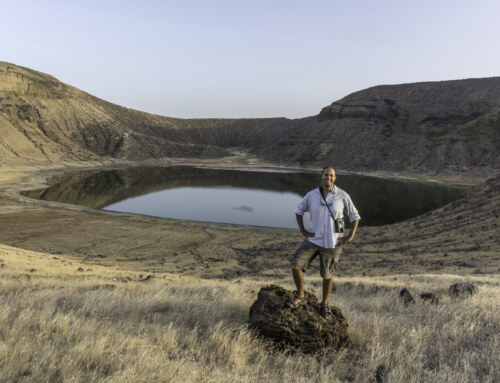This past weekend we visited the West Turkana Archaeological Project(WTAP) campsite at Lomekwi and had the opportunity to set up and test a charcoal evaporative cooler and a hanging evaporative cooler. The field research camps have limited access to electricity and cold storage for fruits and vegetables, so evaporative cooling is a potential solution to increase the shelf life of produce in the field. For the few weeks leading up to this trip, we tested the cooling efficiency of various materials and structures and decided on two designs that we tested with real produce, each holds about two crates of produce and neither use electricity. By testing our designs in the a field camp setting, we are able to assess their efficiency and practicality in a neutral setting.
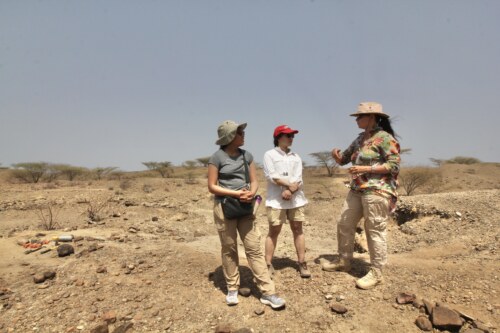
In the field at Lomekwi, the home of the oldest stone tools in the world, with West Turkana Archeological Project PI, Dr. Sonia Harmand
The first cooler is collapsible, made from a folded bed sheet with charcoal in between the two layers. We wrapped this charcoal blanket around a metal structure that could be disassembled and easily transported. A wet jute sack is placed on the top of the cooler, and a gravity fed drip irrigation can be used to keep the charcoal wet throughout the day.
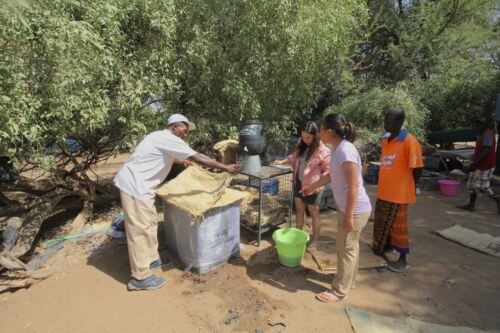
Setting up the collapsible cooler with the help of the WTAP team.
The second cooler is designed to hang and has a canvas interior and a shade net exterior, between which charcoal briquettes, sand and charcoal pieces absorb water for evaporation. This was designed to hold briquettes, however, we learned on arrival the briquettes are no match for the rough Turkana roads. The cooler had internal shelves made of canvas and stainless steel, maximizing the storage space inside.
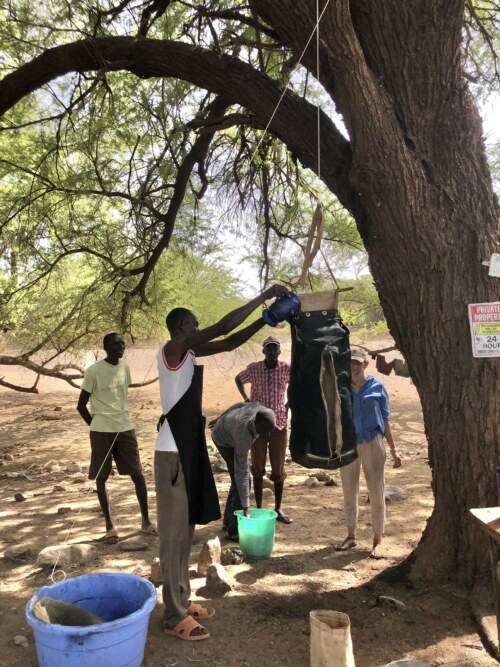
The WTAP team helps with watering the hanging cooler.
As water evaporates from the sides of the coolers, the temperature inside decreases and the humidity increases. These small changes can have drastic effects on the shelf life of fruits and vegetables placed inside! The archeologist team was very excited by the idea of evaporative cooling because the camp was not able to keep fruits and vegetables cold after their refrigerator broke down. One of the kitchen staff members even told us that he wanted to build a charcoal evaporative cooler for his home.
Lomekwi was an amazing place to spend the weekend and test the evaporative coolers. WTAP’s PI Dr. Sonia Harmand called the site the “cradle of innovation” because the oldest stone tools in the world (3.31 million) were found at Lomekwi by her team! There is something really special about creating innovative solutions to today’s challenges in the same location where early humans engineered their own tools 3 million years ago. The early humans living in this region started the path of human innovation and led us to where we are today in the engineering world–creating evaporative coolers for fruit and vegetable preservation and so many more sustainable solutions making the world a more livable place even in the face of climate change and high temperatures!
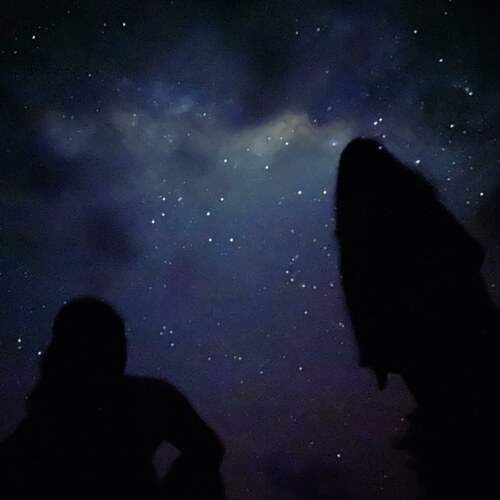
The night skies in Turkana are incredible.
Authored by Ava Dijstelbloem and Christine Tang.


